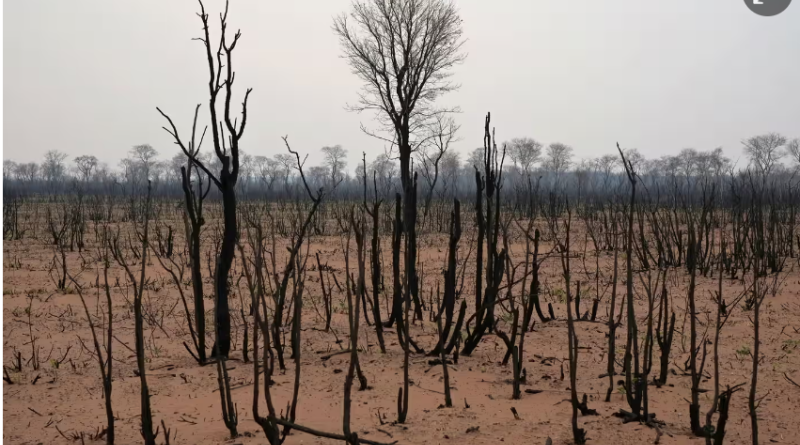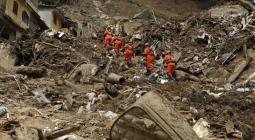Global rainforest loss continues at rate of 10 football pitches a minute

Despite major progress in Brazil and Colombia, deforestation led by farming still cleared an area nearly equal to Switzerland
The destruction of the world’s most pristine rainforests continued at a relentless rate in 2023, despite dramatic falls in forest loss in the Brazilian and Colombian Amazon, new figures show.
An area nearly the size of Switzerland was cleared from previously undisturbed rainforests last year, totalling 37,000 sq km (14,200 sq miles), according to figures compiled by the World Resources Institute (WRI) and the University of Maryland. This is a rate of 10 football pitches a minute, often driven by more land being brought under agricultural cultivation around the world.
While Brazil and Colombia recorded large drops in forest loss of 36% and 49% respectively, under the environmental policies of presidents Luiz Inácio Lula da Silva and Gustavo Petro, those falls were offset by big increases in Bolivia, Laos, Nicaragua and other countries.
Canada also experienced a record-breaking loss of forest due to fire, losing more than 8m hectares (20m acres).
Mikaela Weisse, director of Global Forest Watch at the WRI, said: “The world took two steps forward, two steps back when it comes to this past year’s forest loss.
“Steep declines in the Brazilian Amazon and Colombia show that progress is possible, but increasing forest loss in other areas has largely counteracted that progress,” she said. “We must learn from the countries that are successfully slowing deforestation.”
Changes in land use – of which deforestation is a central component – is the second-largest source of greenhouse-gas emissions and a main driver of biodiversity loss. Preserving rainforests is essential to limit global heating to 1.5C (2.7F) above pre-industrial levels, according to researchers.
Experts have warned that continuing deforestation means governments are dangerously off-track when it comes to meeting their climate and biodiversity commitments. At the Cop28 climate conference in Dubai, governments agreed on the need to halt and reverse the loss and degradation of forests by 2030, after a commitment by world leaders at Cop26 in Glasgow to end their destruction this decade.
But the new figures show that the world is a long way from meeting this target, with little change in global forest loss for several years.
While Brazil had significantly slowed its rate of forest loss, the country remained one of the top three countries for losing primary rainforest, alongside the Democratic Republic of the Congo and Bolivia. Together, they accounted for more than half of the total global destruction.
Bolivia recorded a major surge in forest loss for the third consecutive year – despite having less than half of the forest of other major rainforest countries such as the DRC and Indonesia – driven largely by the expansion of soya farming.
Laos and Nicaragua lost major chunks of their remaining untouched rainforest in 2023, clearing 1.9% and 4.2% respectively in a single year, which researchers said was because highly fragmented forests in countries that had already been cleared extensively can often be more quickly erased.
In Laos, agricultural expansion is being fuelled by demand from China for commodities, while in Nicaragua, cattle ranching and expanding agriculture are to blame.
Despite the lack of overall progress in the figures for 2023, researchers said the world could learn from the examples of Brazil and Colombia to meet deforestation targets.
Prof Matthew Hansen, a specialist in remote sensing at the University of Maryland’s geography department, said: “I really believe the only way to maintain standing forests is a compensation fund for conserving standing rainforests.
“Germany has floated the ‘Fair Deal’, which is meant to pay rainforest countries in this manner. Norway has engaged with Gabon in a similar way, using carbon sequestration as the measure. Couple that approach with robust governance and civil society engagement, and it might work,” he said.
Cover photo: Burned forest in the Ñembi Guasu conservation area in Charagua, Bolivia. The expansion of soya farming led to a surge in forest loss for a third year in Bolivia. Photograph: David Mercado/Reuters





